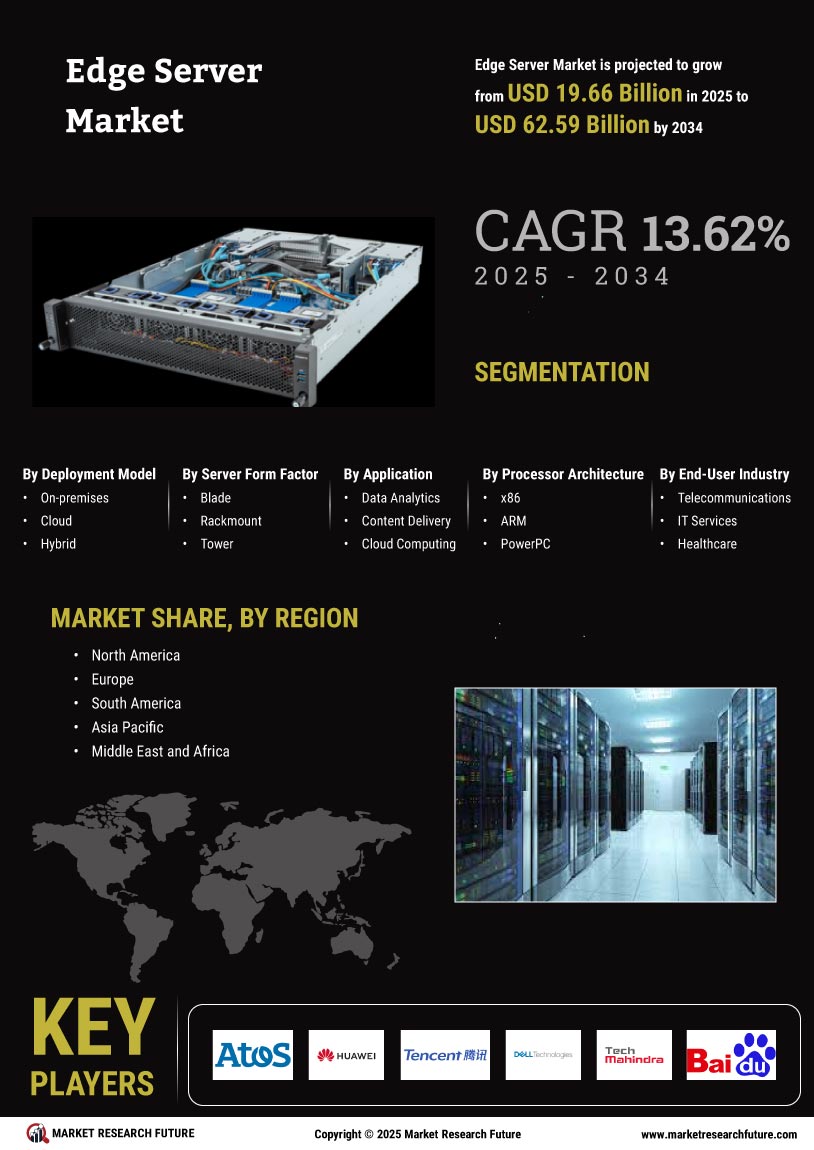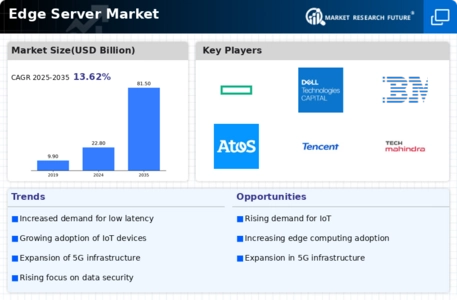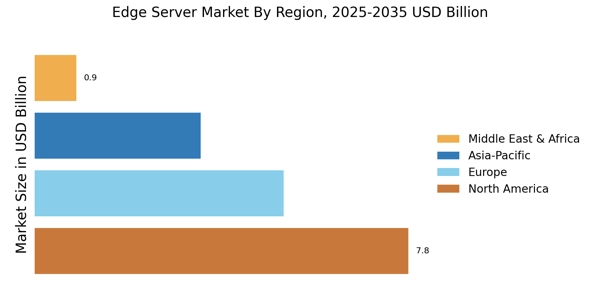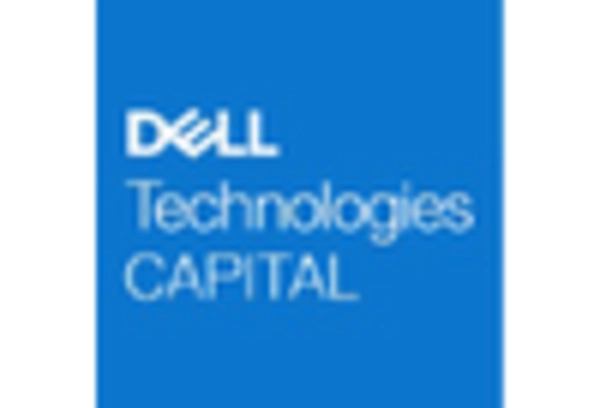Emergence of 5G Technology
The rollout of 5G technology is a transformative factor for the Edge Server Market. With its promise of ultra-fast data transfer speeds and reduced latency, 5G enables new applications that require immediate data processing. Industries such as healthcare, automotive, and entertainment are poised to leverage 5G to enhance their services, which in turn drives the demand for edge servers. The Edge Server Market is expected to expand as businesses invest in infrastructure that supports 5G capabilities. Market forecasts indicate that the global 5G services market could exceed 500 billion dollars by 2025, highlighting the potential for edge computing to play a crucial role in the deployment of 5G applications.
Rising Adoption of IoT Devices
The proliferation of Internet of Things (IoT) devices is a pivotal driver for the Edge Server Market. With billions of devices expected to be connected in the coming years, the demand for efficient data processing at the edge is becoming increasingly critical. IoT applications, ranging from smart homes to industrial automation, generate vast amounts of data that require real-time analysis. The Edge Server Market is poised to benefit from this trend, as organizations seek to deploy edge servers to handle the influx of data generated by IoT devices. Market data suggests that the number of connected IoT devices could reach 75 billion by 2025, further emphasizing the need for robust edge computing solutions to manage and process this data effectively.
Growth in Cloud Computing Services
The Edge Server Market is significantly influenced by the growth of cloud computing services. As businesses migrate to cloud-based solutions, the need for edge computing becomes more pronounced. Edge servers complement cloud services by providing localized data processing, which enhances performance and reduces bandwidth costs. The market for cloud computing is expected to reach over 800 billion dollars by 2025, indicating a robust demand for integrated solutions that combine cloud and edge computing. This synergy allows organizations to leverage the benefits of both technologies, leading to increased efficiency and scalability. Consequently, the Edge Server Market is likely to see substantial growth as companies seek to optimize their cloud strategies with edge computing capabilities.
Focus on Data Privacy and Compliance
The increasing emphasis on data privacy and regulatory compliance is shaping the Edge Server Market. Organizations are under pressure to protect sensitive information and adhere to stringent regulations such as GDPR and CCPA. Edge computing offers a solution by allowing data to be processed locally, thereby minimizing the risk of data breaches and ensuring compliance with privacy laws. As businesses prioritize data security, the Edge Server Market is likely to witness growth, as companies seek to implement edge solutions that enhance their data protection strategies. The market for data privacy solutions is projected to grow significantly, indicating a strong alignment between edge computing and the evolving landscape of data privacy regulations.
Increased Demand for Low Latency Solutions
The Edge Server Market is experiencing a surge in demand for low latency solutions, driven by the proliferation of real-time applications. Industries such as gaming, finance, and autonomous vehicles require instantaneous data processing to enhance user experiences and operational efficiency. According to recent data, the need for low latency is projected to grow by over 30% in the next few years, as businesses increasingly rely on edge computing to minimize delays. This trend indicates a shift towards decentralized computing architectures, where data is processed closer to the source, thereby reducing latency. As organizations seek to improve their service delivery, the Edge Server Market is likely to expand, catering to the needs of sectors that prioritize speed and responsiveness.


















Leave a Comment